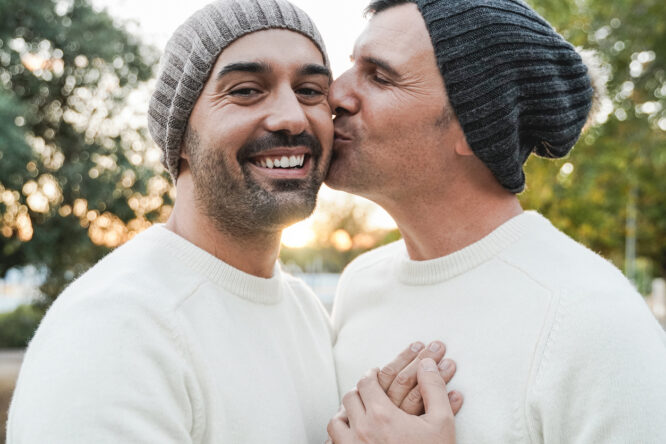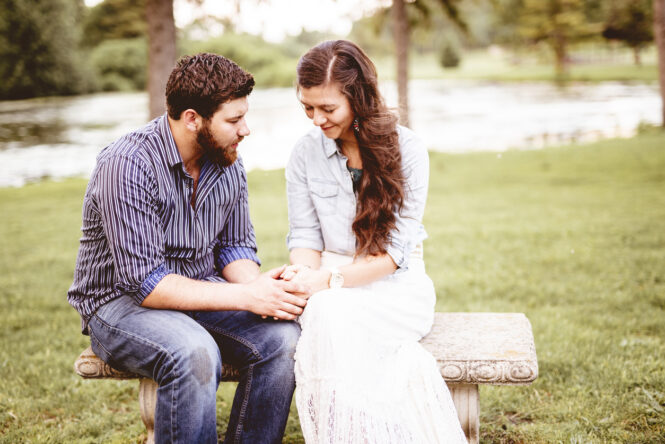Open relationships aren’t about being careless—they’re about being clear.

When done with intention, they can create space for freedom, honesty, and deeper trust. However, that only works if everyone involved knows where the emotional edges are. Boundaries aren’t just rules—they’re a form of care. They protect connection while allowing room for exploration. These are some of the most important ones to put in place if you want to try this unconventional arrangement.
1. Agree on what “open” actually means.

This sounds basic, but it’s one of the most overlooked conversations. Are you talking about casual dating? Emotional connections? Physical intimacy only? One-off experiences? Everyone has their own definition, and if yours don’t match, confusion hits fast. Before anything happens, get honest about what each of you is comfortable with. The label “open” doesn’t mean much without shared understanding underneath it.
2. Set limits around emotional involvement.

Some people are okay with casual connections, but not with forming deeper bonds. Others want the freedom to build meaningful connections. Whatever your line is, name it. Emotional boundaries are just as important as physical ones. This helps prevent miscommunication later. It also makes it easier to check in with each other when feelings change—because they often do, even when you didn’t expect them to.
3. Agree on how much you want to know.

Some people want full transparency. Others prefer a “don’t ask, don’t tell” approach. Neither is wrong—what matters is that you’re on the same page. Sharing too little or too much can create distance if it doesn’t match your partner’s comfort level. This is one of those boundaries that needs revisiting. What feels okay in theory can feel different once real people and emotions get involved. Leave room to adjust.
4. Always check in before changing the dynamic.

What starts as casual can change fast. If you start developing deeper feelings for someone new or want to change how things work, don’t wait until it’s messy to bring it up. Respect means giving your partner a heads-up, not a post-event recap. Healthy open relationships thrive on updates—not because you’re asking for permission, but because you’re treating your partner like they deserve to be part of the conversation.
5. Practice safer sex as a non-negotiable.

This isn’t just about health—it’s about trust. Being sexually active with more than one person increases risk, and not discussing protection sends the message that you’re being reckless with each other’s wellbeing. Whatever your agreement looks like—barrier use, testing frequency, or shared expectations—make sure it’s clear and followed. Safety isn’t optional just because it’s not monogamous.
6. Make space for jealousy instead of pretending it won’t happen.

Even in the healthiest open setups, jealousy can show up. The goal isn’t to eliminate it—it’s to create space where it can be talked about without shame or defensiveness. You’re still human. That doesn’t make you bad at open relationships. Have a plan for what to do when jealousy hits. Talk about how you’ll support each other through it instead of letting it grow in silence. Naming it takes away a lot of its power.
7. Keep time and energy balanced.

If you’re constantly choosing new partners over your primary one, things start to feel lopsided fast. It’s not about strict schedules—it’s about making sure your core connection doesn’t get neglected while new ones unfold. Set boundaries around how much time you spend outside the relationship versus how much you nurture the one you’re already in. When that balance is respected, both people feel more secure.
8. Avoid bringing new partners into shared spaces without discussion.

If you live together, share a bed, or have regular rituals, then respect those spaces. Don’t introduce new people into those environments without checking in first. Even in open relationships, home still needs to feel like a place of emotional safety. This boundary is about protecting shared energy. It’s not about control—it’s about honouring what you’ve built together and not letting new dynamics disrupt that without consent.
9. Set boundaries around how you speak about new partners.

It’s healthy to be open, but not everything needs to be shared in full detail. If your partner isn’t comfortable hearing about intimate specifics, respect that. Oversharing can be just as harmful as secrecy. Decide what kind of information helps you both feel informed without becoming emotionally overwhelmed. A little discretion is often the difference between transparency and emotional overload.
10. Have a check-in ritual that happens regularly.

Open relationships require more communication than most people realise. Things change quickly—feelings change, insecurities pop up, and what felt fine last month might not anymore. Don’t wait until there’s tension to talk. Set a regular time—weekly, monthly, whatever works—to check in. Talk about how things feel, what’s working, what’s not. Even ten minutes can reset the connection and keep things grounded.
11. Protect intimacy that’s just yours.

Not every part of your connection needs to be shared or replicated. Maybe there’s a special ritual, nickname, or kind of physical affection that stays just between you. Keeping certain things exclusive helps protect your emotional closeness. It’s not about being possessive—it’s about having anchors that remind you, “This is ours.” That emotional tether is what makes it possible to explore without drifting too far apart.
12. Be honest about when it stops feeling okay.

There’s no shame in changing your mind. Sometimes a setup that once felt empowering starts to feel heavy or confusing. It’s okay to revisit your boundaries, or even close the relationship, if something isn’t working anymore. What matters is that you speak up early and clearly, not after resentment has been building for weeks. Boundaries only work if you give yourself permission to update them.
13. Don’t use openness to avoid deeper relationship issues.

Sometimes people open their relationship to distract from emotional distance, boredom, or unmet needs. However, without addressing the root issues, open dynamics can make things worse, not better. If you’re using openness as a patch instead of a mutual agreement rooted in care, things can unravel quickly. Talk about why you’re choosing this path and make sure you’re doing it from a place of honesty, not avoidance.
14. Keep compassion front and centre.

At the end of the day, boundaries aren’t just rules—they’re acts of care. You’re protecting not just your own emotions, but each other’s. Open relationships are flexible by design, but that doesn’t mean they’re emotionally loose or careless. Lead with kindness, stay curious about what your partner needs, and check in with your own emotions along the way. When compassion guides the dynamic, everything else is easier to work through.



